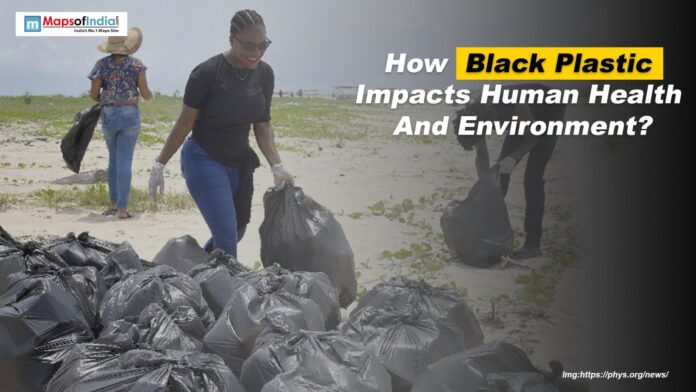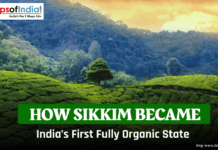Found in utensils, food trays, containers, and other commonplace objects, Black plastic is frequently constructed from recycled electrical debris, such as TVs, laptops, and appliances. It is more likely to contain heavy metals, including lead, cadmium, and antimony, as well as harmful compounds like flame retardants (bromine). This kind of plastic is used to create commonplace objects like containers, cutlery, and meal trays. It is frequently manufactured from repurposed electronic waste, including TVs, laptops, and appliances.
These are more likely to include hazardous chemicals, such as flame retardants and heavy metals, in uncontrolled quantities. Black Carbon is a pigment obtained from the partial combustion of fossil fuels, which is then mixed with plastic to give it a black colour. Black Plastic is widely used across India for appliances, packaging, electronic gadgets, vehicle parts, and ordinary home items.
Various kinds of Black Plastic:
Black plastic comes in various forms, each with its traits and features. The most general kinds are:
- Polyethylene (PE) is a lightweight, flexible, chemically resistant plastic commonly used in food packaging and disposable containers.
- Polypropylene (PP): PP has a higher melting point than PE and is majorly used in vehicle manufacturing industries for making parts, reusable plastic containers, and microwave-safe wrapping in the Food Industry.
- Polystyrene (PS): Known for its insulating characteristics, polystyrene is used in disposable food packaging, like foam takeaway containers and coffee cups, and protective
Process of Production
Black plastic began with the extraction of fossil fuels, which are then refined into organic material to generate various plastic resins. While processing, black carbon pigment is added to these resins, giving the plastic its predominant feature of dark colour. The pigment is attractive, offers higher UV resistance, and is long-lasting. Black plastic excruciates distinctive recycling challenges. Not all will be recycled, even after avoiding general recycling blunders and carefully separating your waste. Identifying these issues is essential for developing solutions to reduce their environmental effect.
Issues in Recycling
What makes this an issue for black plastics, then? Currently, recyclable plastic sorting technology uses cameras to identify reflected light. The cameras cannot determine the sort of plastic a black plastic item comprises because the pigment in black plastics absorbs light rather than reflects it. Because of this reason, products made with black plastic end up in landfills along with other substances that are non-recyclable. In addition, you’ll observe that significant parts of black plastic products lack a recycling number stamped on the underside of the container. This makes recycling black plastic products much more challenging.
Black plastic is most often used in the food and beverage sector. Restaurants frequently use black plastic for takeout order utensils and food containers. Black garbage bags, bottle caps, coffee cup lids, and personal care items like shampoo and conditioner bottles are frequently made of black plastic. Even while these might only seem like a few things, 15% of our waste is made up of black plastic, which is not recycled.
Black Plastic environmental hazards
Black plastics accumulate a significant chunk of the recycling problem; they also come up with various hazards related to the environment that often go unobserved. The major problems associated with this are
Leaching of toxic chemicals:
Similar to other plastics, black plastic leaches hazardous chemicals into the environment. However, the black carbon pigment in black plastic has been associated with a significant risk of releasing harmful substances, such as high-density metals like cadmium and endocrine disruptors, which can deteriorate ecosystems and human health.
Microplastic pollution in waterways and oceans:
With time, plastic waste can break down into smaller particles called microplastics.
Greenhouse gas emissions from production and disposal:
The production, use, and disposal of black plastics contribute to greenhouse gas emissions, which aggravate climate change. From the extraction of fossil fuels to the burning of plastic waste, the life cycle of black plastics has a notable carbon footprint.
Health concerns:
Potential toxic chemicals in food packaging:
Black plastic is often made by recycling electrical appliances. As a result, black plastic usually contains — among other things — hazardous chemical substances such as lead, mercury and cadmium. When black plastics are used for food packing, there is a risk that dangerous chemicals can transfer into the food, especially when the packing is exposed to heat or sunlight. This can pose health risks to end users, including potential endocrine disruption and increased exposure to high-density metals. Lead, for example, can cause concerning physical harm, from anaemia and hypertension to nerve, kidney and brain damage.
Air pollution from incineration:
When black plastics are burned, they release toxic chemicals and greenhouse gases into the atmosphere. Using black plastic is a major human activity that leads to air pollution. This pollution can have dangerous effects on human health, contributing to respiratory issues, heart disease, and even cancer.
Alternatives of Black Plastic:
The problems linked to black plastics call for the exploration of viable alternatives and creative solutions that can help reduce their negative impact on the environment and human health. Reducing black plastic and getting a reliable grip on the global plastic waste problem requires action from policymakers, manufacturers, and consumers. The best alternative is to go plastic-free, but until that’s possible, here are some key alternatives.
Environment-friendly Materials
Bioplastics: Bioplastics are obtained from renewable resources like wheat straw, cornstarch, sugarcane, or algae and are an eco-friendly alternative to traditional plastics. Some bioplastics are compostable, which lowers their impact on the environment.
Paper-based Packing: Paper-based packing, made from renewable materials, can provide a sustainable alternative to packing black plastic food. It is distinctively easier to recycle and can even be composted in some cases.
Recycled Polyethylene Terephthalate Plastic (rPET): Encourage the use of rPET plastics, which are made thoroughly from recycled products and are a more eco-friendly choice overall.




